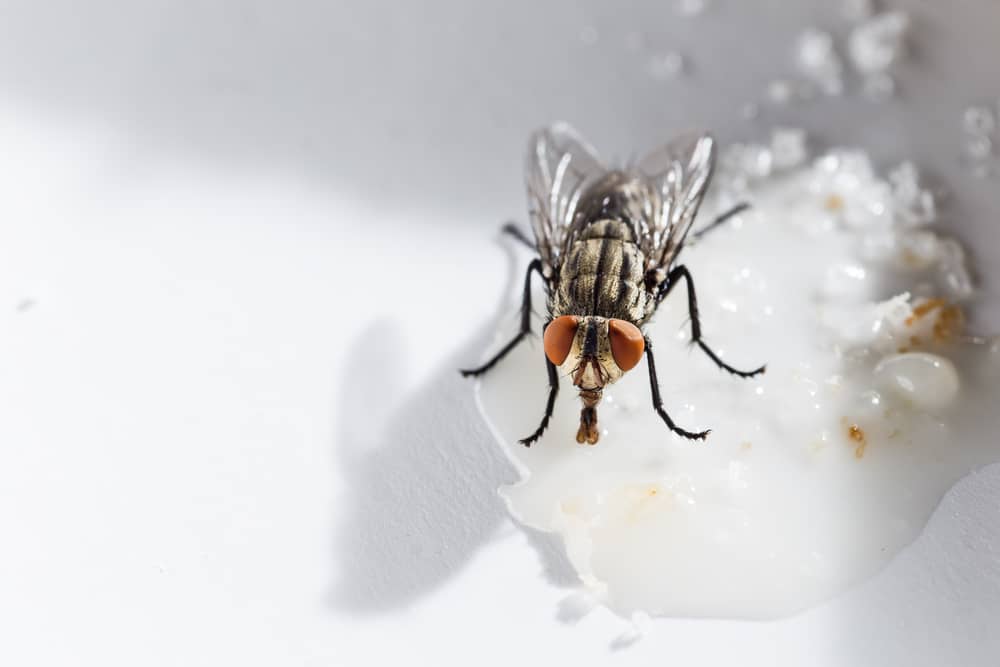Some things in life are inevitable. Every week starts on Monday, toilets need cleaning, and flies will somehow get into your home.
Even a single house fly can cause problems – they may only live a week or two, but they can lay up to 100 eggs before they die. Those will grow into adult flies and cause an infestation.
Additionally, the flies carry bacteria and pathogens that can contaminate food, water, and surfaces in your home.
What attracts flies? Things like rubbish bins, exposed food, dirty drains, plants, and openings can draw them in.
How to get rid of flies? Try one of these techniques to keep flies away:
- Using cinnamon
- Keeping potted plants
- Using essential oils
- Creating patchouli bags
- Setting out vodka
- Using apple cider vinegar
- Making a cayenne pepper spray
You can also opt for a trapping method such as a DIY fly trap, homemade fly paper, homemade fly repellent spray, or a light trap.
And of course, keep up with regular cleaning (or hire a reliable house cleaner in your area) so house flies don’t become house guests. You won’t have to get rid of house flies if you don’t have any!
What Attracts Flies in a House?
Musca domestica, or house flies, have grey or black bodies and semi-translucent wings. They’re rarely bigger than 0.7cm long.
Other flies you’ll commonly encounter in Australia include bush flies, blow flies, and midges (or sand flies).
Often, any pests that enter your home will lay eggs in anything from food waste to sink drains. Those will grow into adult flies, which can reproduce very quickly.
A house fly doesn’t bite, but it can be hazardous to your health. Flies carry pathogens and can spread disease when they enter your home. Also, they’re just annoying.
If you’re wondering why your home is suddenly a-buzz, here are some common reasons you have flies in your home.
Rubbish bins
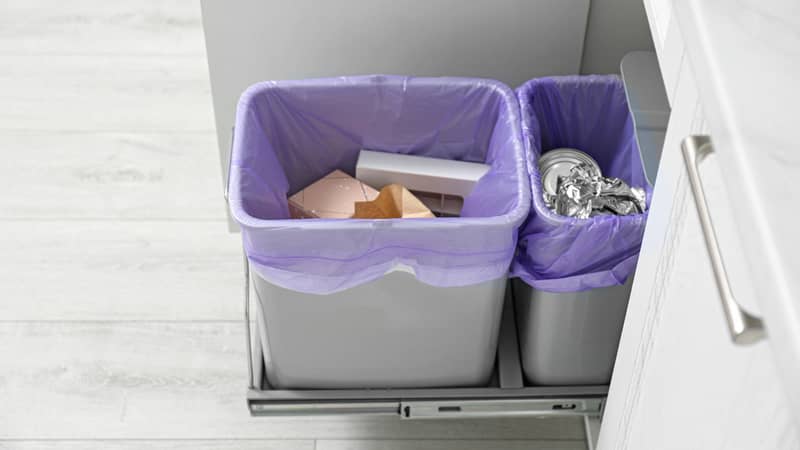
This is one of the primary culprits – an exposed rubbish bin can attract flies quickly.
House flies love rotting meat, produce, and other food scraps. The decomposing food becomes breeding sites for house flies, where they can start laying eggs.
Alternatively, overripe produce will attract fruit flies.
Moreover, if your outdoor rubbish bins or compost piles are near an opening such as a door or window, they can attract flies that will later enter your home.
In this case, it’s things like pet waste and decaying organic matter that lead to a fly problem.
Food and drink
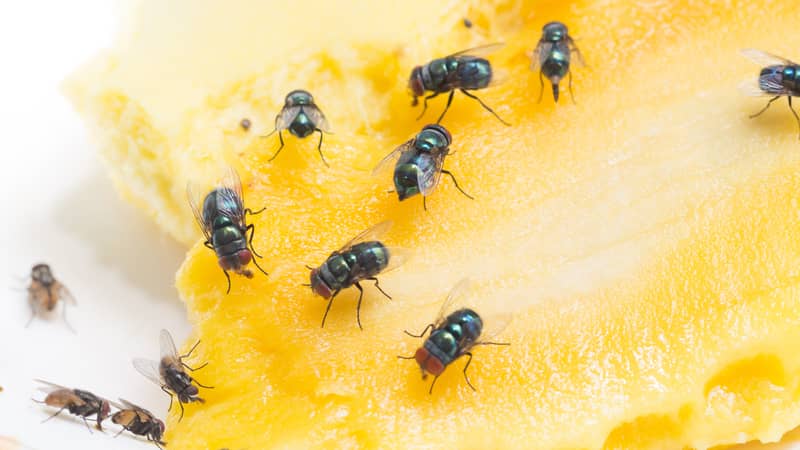
If there’s food that’s left out or a drink spill that hasn’t been cleaned up ASAP, you may find these pesky critters gathering around.
Worst case scenario, food or drink slipped into a nook or crevice that someone didn’t notice, and it began to rot.
Dirty drains
This mostly applies to the kitchen sink. If you don’t regularly clean your sink drain, grease trap, or waste disposal unit, the gunk becomes a siren call for annoying flies.
Often, the build-up of grease and food waste turns into house fly breeding grounds.
Certain plants
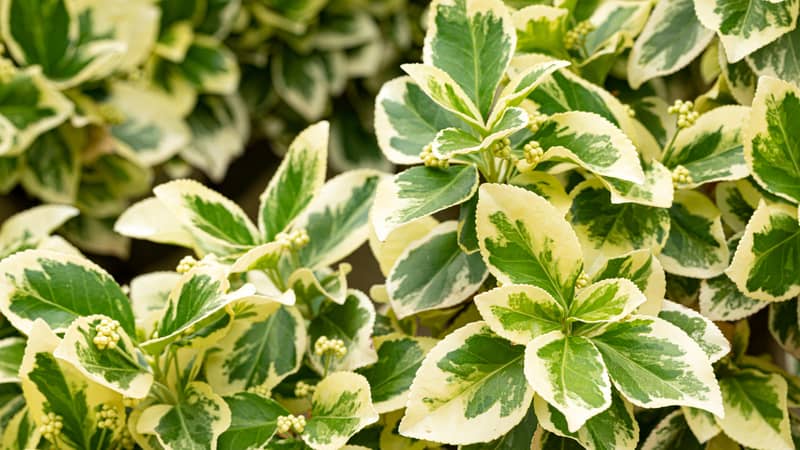
Flies can be attracted to several flowering plants, especially ones with strong scents such as Euonymus japonicus and stapelias.
Additionally, if there are decaying leaves in the pots, these could attract flies (as well as other problems like fungus).
Openings such as windows
Flies can enter your home from the outside through openings such as broken window screens (or screenless windows) or door screens.
It’s important to know that outdoors, flies can be important to your local flora and wildlife. Flies are also pollinators just like bees and butterflies.
However, if you have standing water in your garden or an exposed compost pile, these could turn into a free house fly hotel. And those flies could get into your house, where they are decidedly less welcome.
How to Get Rid of House Flies Naturally
There are many organic methods for fly control, and the best part is you likely already have these ingredients or items in your home!
Here are seven tried-and-tested, natural ways to get rid of flies in your home.
1. Use cinnamon

Most people dealing with pesky flies find themselves searching “Does cinnamon repel flies?” The answer is yes.
Science shows that cinnamon is most effective as a fumigant, as flies hate the smell of cinnamon. But it also works to deter flies in oil form.
Some ways to create homemade cinnamon fly repellent include:
- Diffusing cinnamon essential oil
- Mixing cinnamon oil with water in a spray bottle
- Sprinkling ground cinnamon on a low burner to release the scent
- Lighting some cinnamon incense sticks
Cinnamon has the added advantage of being toxic to house flies. You can use the spray in problem areas to prevent egg-laying.
Cooking cinnamon powder or lighting cinnamon incense are some of the best ways to get rid of flies in the house quickly.
Another equally effective organic compound is turmeric. In fact, some research shows that turmeric oil may be more effective than cinnamon oil in fly repellents.
2. Keep potted plants
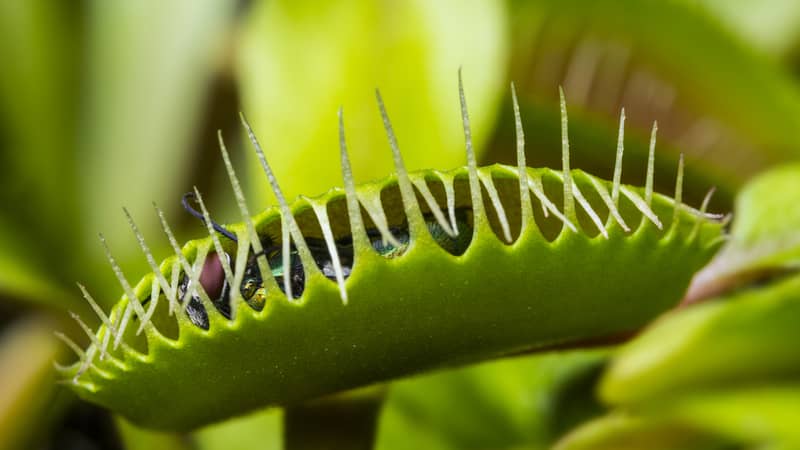
Several plants are natural insect repellents – and lots of them are edible, too!
Some indoor plants to grow to repel house flies include:
- Citronella
- Basil
- Lavender
- Garlic
- Mint (only in pots, as it can quickly become invasive)
- Rosemary
- Bay leaf (or bay laurel)
- Lemongrass
- Venus flytrap
Outdoors, consider planting lemon eucalyptus, eucalyptus trees, tansy, and wormwood.
3. Use natural and essential oils
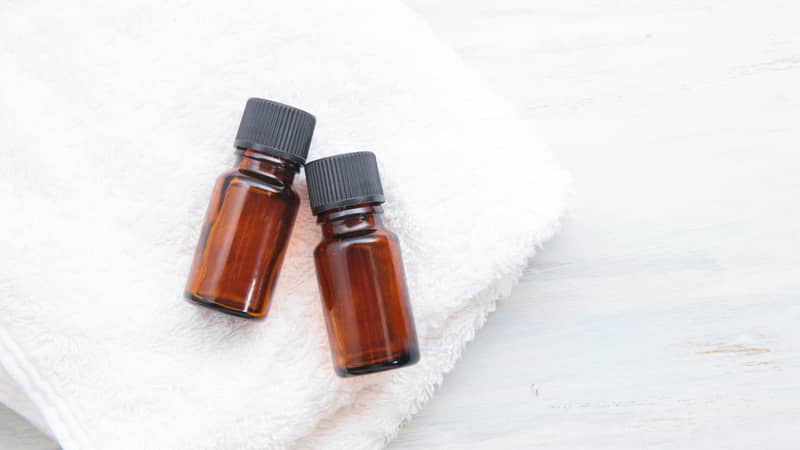
Besides cinnamon and turmeric, there are other oils that you can diffuse. Alternatively, soak small patches of cotton or microfibre cloth in the oil and set them out near problem areas.
Some good essential oils to deter house flies include:
- Eucalyptus oil
- Lavender oil
- Peppermint oil
- Lemongrass oil
- Pine oil
- Clove oil
You can also mix a few drops of your chosen oil with 2 cups of water or vodka as an anti-fly spray.
NOTE: Many essential oils are toxic to pets, particularly cats. Check whether the oil you’re choosing is pet-safe or opt for a different pest control solution.
4. Create patchouli bags
If you don’t want to use oils, you can also use dried herbs and spices to create patchouli bags!
Dried lavender, thyme, mint, basil, cloves, and eucalyptus all create a scent that will keep flies away. As a bonus, your house will smell wonderful.
5. Set out vodka
Turns out, house flies don’t particularly like liquor. Add a tablespoon of scented dish detergent (apple scents work great) to a cup of vodka.
Set the mixture out where you find the most flies. The scent will attract the pests, then the liquor will kill them.
Keep the solution out of reach of pets or small children.
6. Use apple cider vinegar
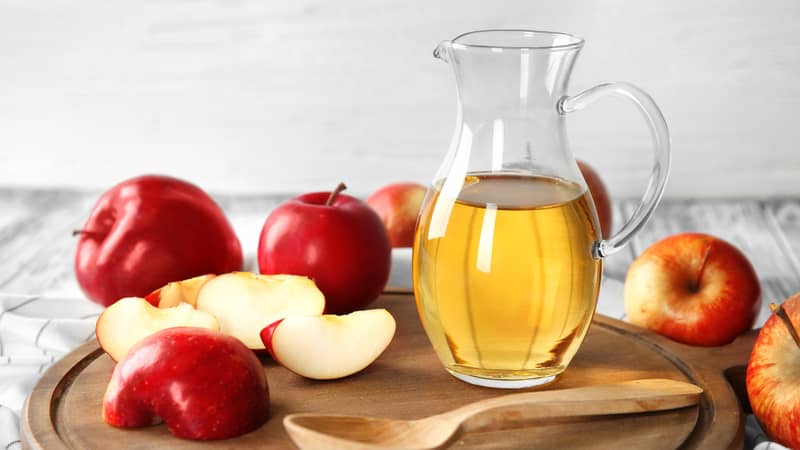
Apple cider vinegar has many uses around your home, and fly control is one of them!
Mix equal parts apple cider vinegar and dish soap in a bowl or jar. You can add a sprinkle of sugar as a sweet incentive.
As an optional step, you can cover the container with plastic wrap, then poke small holes in.
The vinegar attracts the house flies (as does sugar), which will enter through the holes. The soap will trap the house flies, and the solution will kill them.
You can substitute the vinegar with stale wine.
7. Make a cayenne pepper spray
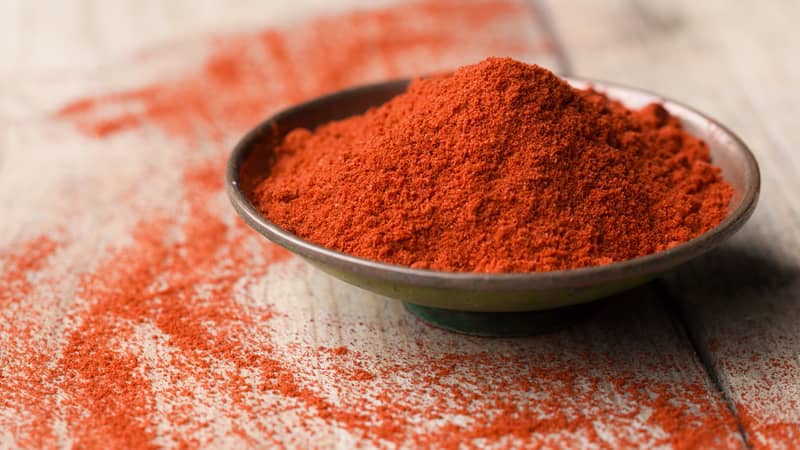
Be careful with this one – you want to hurt the house flies, not yourself!
Add some ground or powdered cayenne pepper to warm water or vodka in a spray bottle. Shake to mix, then spray around any fly-prone areas.
Do not touch your face or eyes after handling the pepper, and wash your hands thoroughly. If any of the mixture gets in your eyes, flush them immediately with clean water (and if it’s bad, see a doctor).
Other Home Remedies to Get Rid of House Flies
Besides the above natural methods, you can also use these trapping methods or make a DIY fly deterrent.
Set up DIY fly traps
If you’ve got a plastic bottle (like an empty soft drink one) hanging around, repurpose it into a homemade fly trap!
You’ll need a large bottle – about 1.5–2 litres. Cut the top third off (or right above the label) and set it aside.
Pour some sugar water or a similarly sweet substance (some leftover soft drink would work) into the bottle. Invert the cut-off top part, and set it into the bottom part. Seal the edges with tape.
The house flies will enter the trap, attracted by the sweet liquid. Then they’ll become trapped inside.
Toss out the trap once it’s full or after a few days.
Make homemade fly paper
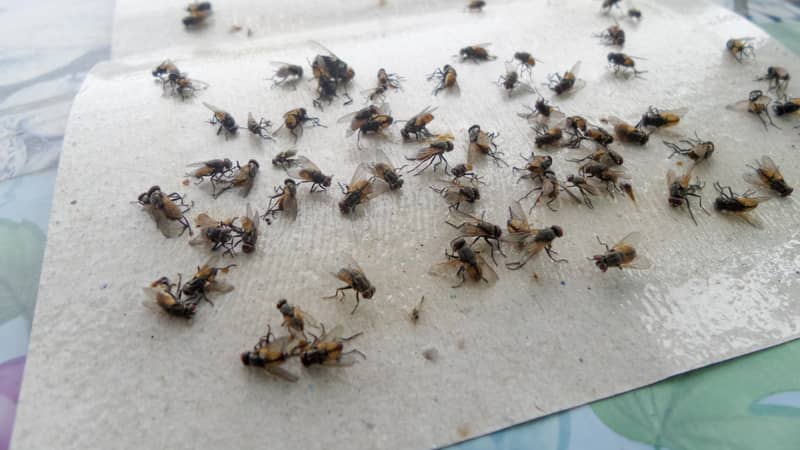
You could pick up some fly paper at the store, or you can make your own!
How to make homemade fly paper? Take one of the many brown paper bags you’ve stashed around “just in case.” (See, you were right – you are going to use them eventually!)
Cut a large paper bag into strips about 30cm long and 5cm wide. You can adjust the size as necessary.
Mix equal parts corn syrup or glucose syrup, sugar, and water in a saucepan on low heat. Stir constantly until the ingredients are just warm and melted.
Remove the pan from heat. Carefully dip the paper strips into the melted mixture until they’re fully saturated.
Use some tongs to take the paper strips from the sticky mixture and lay them out on a drying rack. Place a baking sheet or some old newspapers underneath to catch any drippings.
Let the strips cool and fully dry. Be mindful that they will be very sticky when you lift them off.
Hang the fly papers in problem areas such as windows or near rubbish bins. Change them out once the stickiness has worn off.
Create a fly-repellent spray
Wondering what you can spray around your door to keep flies away?
You can mix up one of the following recipes in a spray bottle:
- 1 cup water, 1 cup white vinegar, and a teaspoon of dish soap
- 2 cups apple cider vinegar, 1 cup water, and a squirt or two of dish detergent
- 2 cups water, 1 cup white vinegar, a few drops of citronella or peppermint essential oil, and a tablespoon of castile soap
Alternatively, you can create a homemade fly killer spray with a 1:1 mixture of isopropyl alcohol and water with a teaspoon of dish soap.
Light traps
These are commercial appliances that attract flies with a bright light at the back of the trap.
Light traps then kill the flies by trapping them at the back or zapping them with a bit of electricity. Try the Lulu Home Electric Bug Zapper or the PALONE Electric Fly Swatter.
Some people may not feel comfortable using these, though. You’ll also need to keep the light traps plugged in around problem areas and clear out the dead flies regularly.
How to Deter House Flies from Entering Your Home
Prevention is always better than cure. Save yourself the headache of dealing with a fly infestation with regular cleaning and good sanitation habits.
Maintain good cleaning routines, especially when around the kitchen. Don’t let dirty dishes pile up in the sink – rinse them immediately or load them in the dishwasher so they’re not out in the open.
Make sure you clean the kitchen sink and drain every day, and deep clean once a week. Wash grease off kitchen walls and backsplashes. And of course, clean your dishwasher so there’s no food residue!
Ensure all rubbish bins, waste disposal units, and compost bins have covers that fully seal shut. Take out the trash regularly to prevent flies from flocking to decaying food.
You can get commercial bin deodorisers such as Bin Buddy Fresh Berry Blast with Citronella.
For outdoor bins and compost piles, keep them at a safe distance from your home.
Regularly clean up after your pets, especially if they’re still being potty trained. Bag and bin animal faeces and dispose of cat litter properly.
Check on the screens on your doors and windows to ensure there are no holes or seals.
Contact pest control if the infestation is particularly bad or recurring.
And if nothing else, there’s always your good old-fashioned fly swatter and your trusty reflexes. Just make sure you disinfect the kill zone afterwards – and the fly swatter, too!

